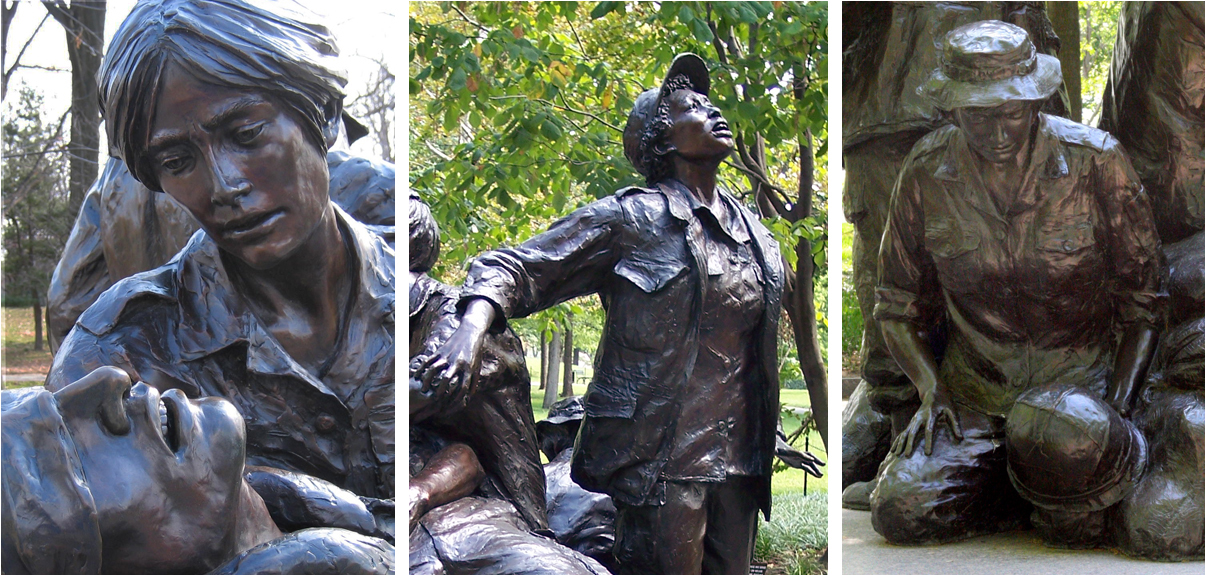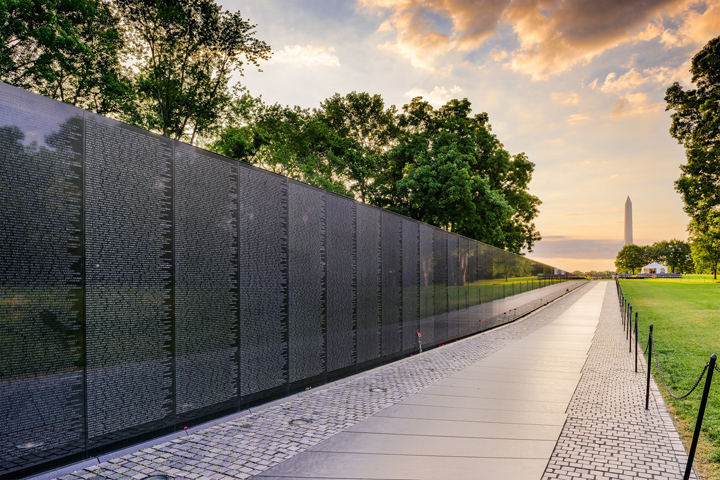Glenna Goodacre, Vietnam Women's Memorial (1993)
(Click the image for a lightbox view)
Glenna Goodacre on her Vietnam Women's Memorial:
"My desire to create a lasting tribute to the American women serving in Vietnam is founded upon my deep respect for each of them, and my heartfelt payer for their ‘healing and hope.’ I have been humbled by the enormity of such a task yet incredibly honored by the overwhelming gratitude of the veterans. The emphasis of this tribute is centered on their emotions: their compassion, their anxiety, their fatigue, and above all, their dedication.
“My first concern in designing this sculpture was to arrange the four figures in a composition that is interesting from all angles: a true sculpture in the round. The photos from Vietnam often included stacks of sandbags. It seemed natural for a nurse – in a moment of crisis – to be supported by sandbags as she serves as the life support for a wounded soldier lying across her lap. The standing woman looks up, in search of a med-i-vac helicopter or, perhaps, in search of help from God.
“The kneeling figure has been called “the heart and soul” of the piece because so many vets see themselves in her. She stares at an empty helmet, her posture reflecting her despair, frustrations, and all the horrors of war. The soldier’s face is half-covered by a bandage, creating an anonymous figure with which veterans can identify. Even though he is wounded, he will live. I want this to be a monument for the living.”
For a comparison of a Continental work of art featuring both male and female in the context of war, consider this work by Anton Mercié, Gloria Victis next to Goodacre’s Vietnam Women’s Memorial:
The French sculpture uses the figure of a woman as a spirit expressing the resolute sorrow experienced by France after she lost the Franco-Prussian War. There is nothing of the reality of suffering: only the broken sword of defeat. Gloria Victis uses the feminine as a symbol for stoic resignation. The Vietnam Women’s Memorial, on the other hand, portrays actual women intimately and realistically involved with the horrors and suffering of a war that ended badly for their country.
The most obvious comparison and contrast to the Vietnam Women’s Memorial is the Vietnam Veterans’ Memorial, completed and dedicated in 1981-82.
The contrast could not be greater. Lin’s design consists entirely of a low, black granite block covered with the names of 57,661 American soldiers who died in that conflict. The Wall might be seen as a gigantic tombstone, with names only — no mention of heroism or ignominy, suffering or duty. However, The Virtual Wall provides a good deal of information about many of the soldiers who died in Viet Nam.
Maya Lin, designer; The Gilbane Building Company, general contractor; the architectural firm of Cooper-Lecky Partnership, construction supervisors
To see Auguste Rodin's narrative of heroism in defeat, click the image below:
Another monument to the American military:













